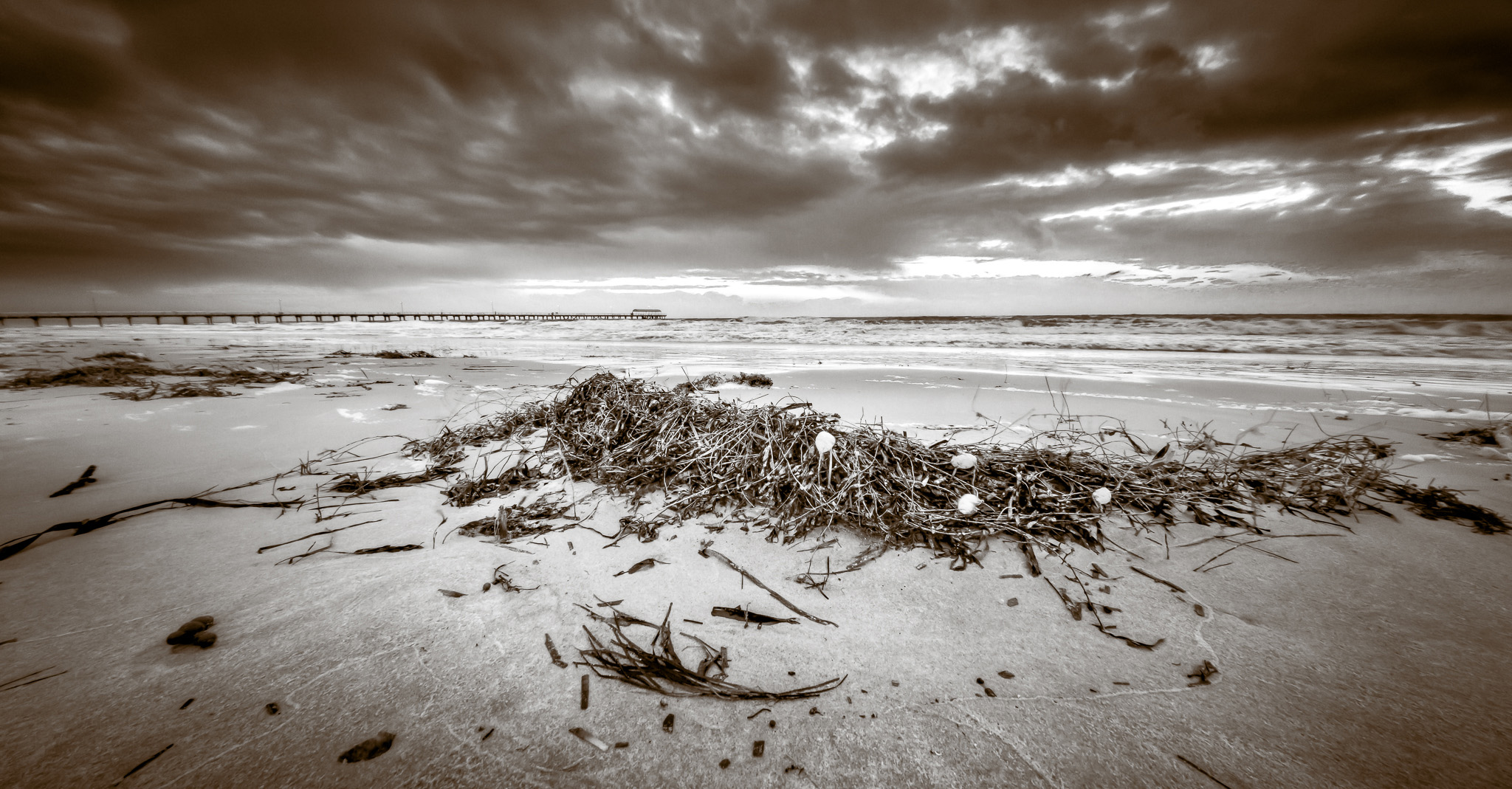I have captured a few images like this one with seaweed washed up on the beach.
The challenge in an image like this is depth of field. It is not easy to have both that jetty shelter in focus as well as the bedraggled clump of tangled weed in the foreground.
Even though choosing the smallest aperture available on the lens will maximise depth of field, it will also make the image soft with diffraction.
The secret is in understanding something called the hyper-focal distance which is simply the distance at which everything from that distance to infinity will be in focus at a given aperture. There are plenty of tools for calculating the maximum aperture for a given distance but in practice I never use them. Almost always I use the depth of field preview (DOFP).
First begin at an ideal aperture like f/8.0. Using the camera’s live preview at maximum magnification and with DOFP enabled, manually focus on the foreground and then move the panning cursor to a point on the background and assess how much the background is out of focus. Repeat this in the opposite direction, ie focus on the background and assess the foreground. If neither is good enough then stop down, ie to f/11 and repeat. Continue this process until you eventually get to a point where you are happy with focus in both the foreground and the background and then set the actual manual focus mid way.
All of this all assumes you have the time to manually setup the camera which fortunately is usually the case for landscapes.
Photo: Robert Rath, ‘Day 624, Bedraggled’ 1/6s f/18 ISO640 15mm


Leave a Reply